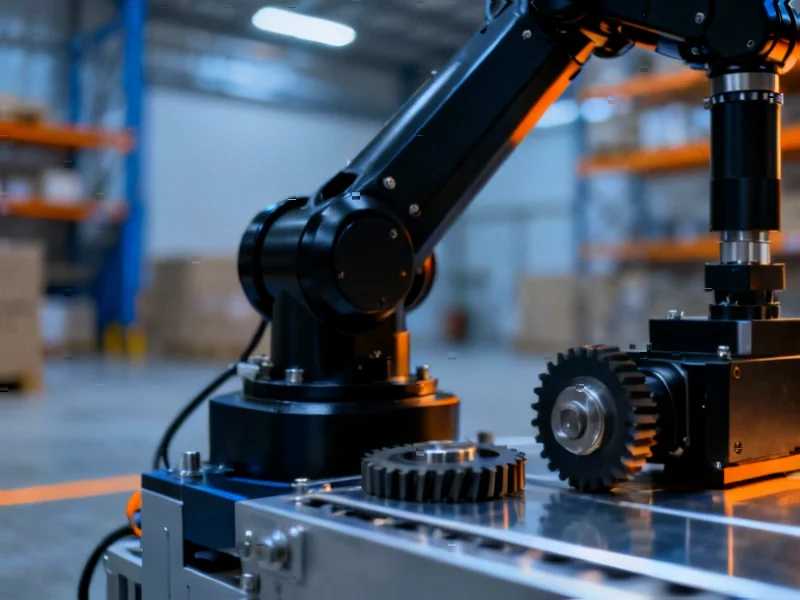The Dual Promise and Peril of AI Infrastructure
As artificial intelligence rapidly transforms our technological landscape, the physical infrastructure powering this revolution is creating complex challenges that extend far beyond Silicon Valley boardrooms. While tech giants celebrate AI’s potential, the communities hosting data centers—particularly Black neighborhoods—face disproportionate environmental burdens and economic exclusion that threaten to widen existing disparities.
Environmental Injustice in the Digital Age
The geographical placement of AI data centers follows a troubling historical pattern of environmental racism. Research confirms that Black Americans are 75% more likely to live near hazardous facilities, including the power-intensive data centers required for AI operations. These facilities, often located in already polluted areas, generate significant environmental impacts that disproportionately affect marginalized communities.
A recent study highlighted how the household health burden from data centers in economically disadvantaged areas could be 200 times greater than in affluent communities. The pollution generated from training a single AI model may exceed the emissions from 10,000 cross-country car trips—environmental costs that are primarily borne by communities that contribute least to energy consumption as a percentage of income.
Economic Promises Versus Realities
While public officials often celebrate data center investments as economic victories, the distribution of benefits reveals a different story. The temporary construction jobs and highly specialized technical positions created by these projects rarely go to local Black residents. Instead, data shows Black workers remain concentrated in fields most vulnerable to AI displacement, including healthcare support, retail, and administrative roles.
According to National Science Foundation estimates, over 45 million U.S. jobs will be impacted by AI in the next three years—with significant exposure in sectors where Black workers are overrepresented. This creates a dual disadvantage: exclusion from the new opportunities created by AI infrastructure while facing heightened risk of job displacement from AI automation.
Policy Shortcuts and Community Exclusion
The rush to build AI infrastructure has prompted concerning policy changes at both state and federal levels. Environmental review processes and public participation requirements are being streamlined or eliminated in the name of technological progress, effectively silencing the voices of those most affected by data center expansion. This pattern of excluding community input from crucial decisions mirrors historical injustices in infrastructure development.
Recent AI infrastructure expansion raises environmental justice concerns as regulatory shortcuts become more common. The weakening of environmental protections combined with reduced community oversight creates conditions where existing disparities can worsen unchecked.
Global Context and Industry Dynamics
The challenges facing Black communities near data centers occur within a broader global context of technological competition and rapid adoption. As industry developments in international tech relations evolve, the domestic impacts on vulnerable communities risk being overlooked in favor of geopolitical priorities.
Meanwhile, corporate AI adoption accelerates across sectors, driving increased demand for data center capacity without corresponding attention to equitable distribution of benefits and burdens. The race for AI supremacy often overshadows considerations of environmental justice and community welfare.
Pathways Toward Equitable AI Development
Despite these challenges, opportunities exist to steer AI development toward more equitable outcomes. Research from McKinsey suggests that while AI could significantly widen racial wealth gaps if deployed without consideration, it also holds potential to build economic power within Black communities if implemented thoughtfully.
Key strategies include:
- Community-centered planning: Involving residents in siting and development decisions from the earliest stages
- Targeted workforce development: Creating pathways to high-quality technical jobs in AI and data center operations
- Strengthened environmental protections: Maintaining rigorous review processes regardless of project type
- Equitable benefit agreements: Ensuring host communities share in the economic gains from data center projects
As related innovations in specialized AI platforms continue to emerge, the technology itself could potentially be harnessed to identify and mitigate disproportionate impacts on vulnerable communities.
The Human Choice in Technological Future
Ultimately, the direction of AI’s development remains a human decision. The critical question is whether society will take deliberate action to ensure AI is deployed responsibly—with attention to historical context, equitable access, and environmental justice—or whether existing disparities will be amplified through technological advancement.
The infrastructure supporting AI represents more than technological progress; it reflects societal values and priorities. As data centers proliferate to meet growing demand, their placement, regulation, and community impact will test our commitment to building an inclusive economy where innovation benefits all members of society, not just those with technological capital.
This article aggregates information from publicly available sources. All trademarks and copyrights belong to their respective owners.
Note: Featured image is for illustrative purposes only and does not represent any specific product, service, or entity mentioned in this article.



